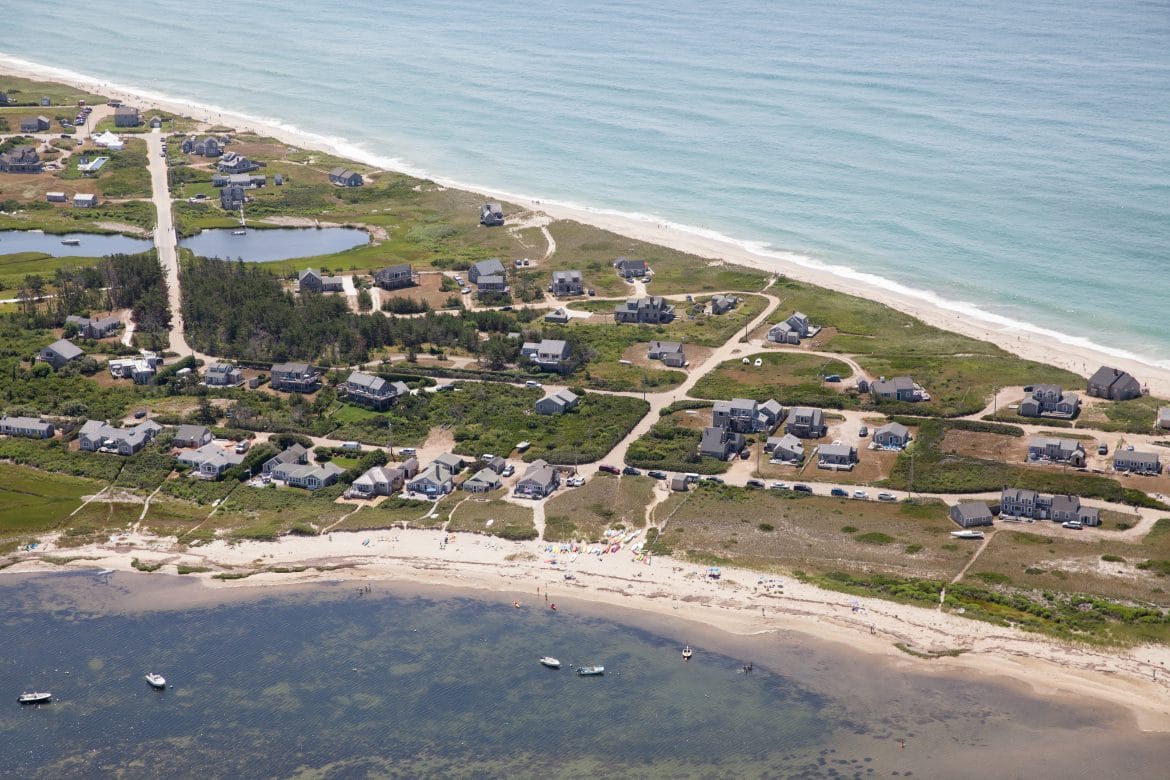“If we can’t convince the taxpayers, the island might as well bend over and kiss its ass goodbye.”
Those were the words of Ian Golding, a member of Nantucket’s Coastal Resilience Advisory Committee and the Conservation Commission, following an initial review of the draft Coastal Resilience Plan. Golding was acknowledging what many have pointed out since the draft plan was released last week: it’s a bold roadmap for the island to confront the challenges of climate change and sea level rise, but the costs are going to be massive. How much and who pays? As the plan moves closer to completion, those are among the vexing questions on the table for town leaders.
The draft Coastal Resilience Plan proposes dozens of potential projects around the island to mitigate the impacts of sea level rise, including strategic retreat and relocation, raising roads and wharves, dune restoration, sand pumping and bypass systems, and even a downtown flood barrier. Cost estimates are not listed in the draft plan, but are expected to be part of the final report that will be released later this month.
“How do we accomplish 40 projects in less than 15 years with the resources we have available? Is that too ambitious?” asked Coastal Resilience Advisory Committee (CRAC) chair Mary Longacre. “I want to see a lot more anchoring of this in the real world…There’s an awful lot being recommended and I don’t know that we can accomplish it all.”
Committee members have discussed a number of potential funding sources to pay for the projects outlined in the draft plan – from state and federal grants, to betterment fees levied on property owners that would directly benefit from a coastal resilience initiative, as well as private fundraising efforts, a new real estate transfer tax, and spreading it across the tax base. Select Board and CRAC member Matt Fee said allocating the costs fairly and in a manner that will be accepted by the community is no small task.
“The devil’s in the details,” Fee said yesterday during a CRAC meeting. “I keep asking how are we going to pay for this? That’s another one we’ve kind of ducked. How are we going to share the costs of this? Those details are going to really matter so the necessary changes happen, and happen in a timely manner.”
Many of the strategies included in the draft plan have a common denominator: the need for sand. Lots of it. At key locations around the island, the consulting team at Arcadis that drafted the coastal resilience plan believes dune restoration will be one of the primary approaches to protecting important infrastructure and buying time for retreat. Indeed, the term “dune restoration” appears 96 times in the draft plan.
But, as CRAC member Joanna Roche asked yesterday, what is the scope of the sand needed to accomplish what is outlined in the draft plan? How much does a truckload of sand even cost?
“Sand is a major issue,” said Vincent Murphy, the town’s Coastal Resilience Coordinator. The cost will vary depending on the source, he said. If it comes from a local dredging project, the only costs are those required to transport it. If the town was buying it from a local pit, the cost would be close to $100 per cubic yard. But the town could push that price down by buying in bulk, perhaps as low as $50 per cubic yard, Murphy said.
The lessons learned from the Sconset Beach Preservation Fund’s geotube project, committee members said, indicate that sand acquisition and delivery is extremely complex and expensive.
Golding had already put together some estimates for yesterday’s meeting.
“My preliminary calculation, at 123,000 cubic yards of sand, that’s about $12 million of sand at $100 per cubic yard,” he said. “It’s clear we’re going to need federal permits for offshore mining, and the sooner we start down that road, the better.”
The CRAC extended the deadline for public comments on the draft Coastal Resilience Plan to the end of the day on Monday, Oct. 11. Comments can be submitted online at this link. The extension means the delivery of the final report will likely be pushed back to Oct. 25.






